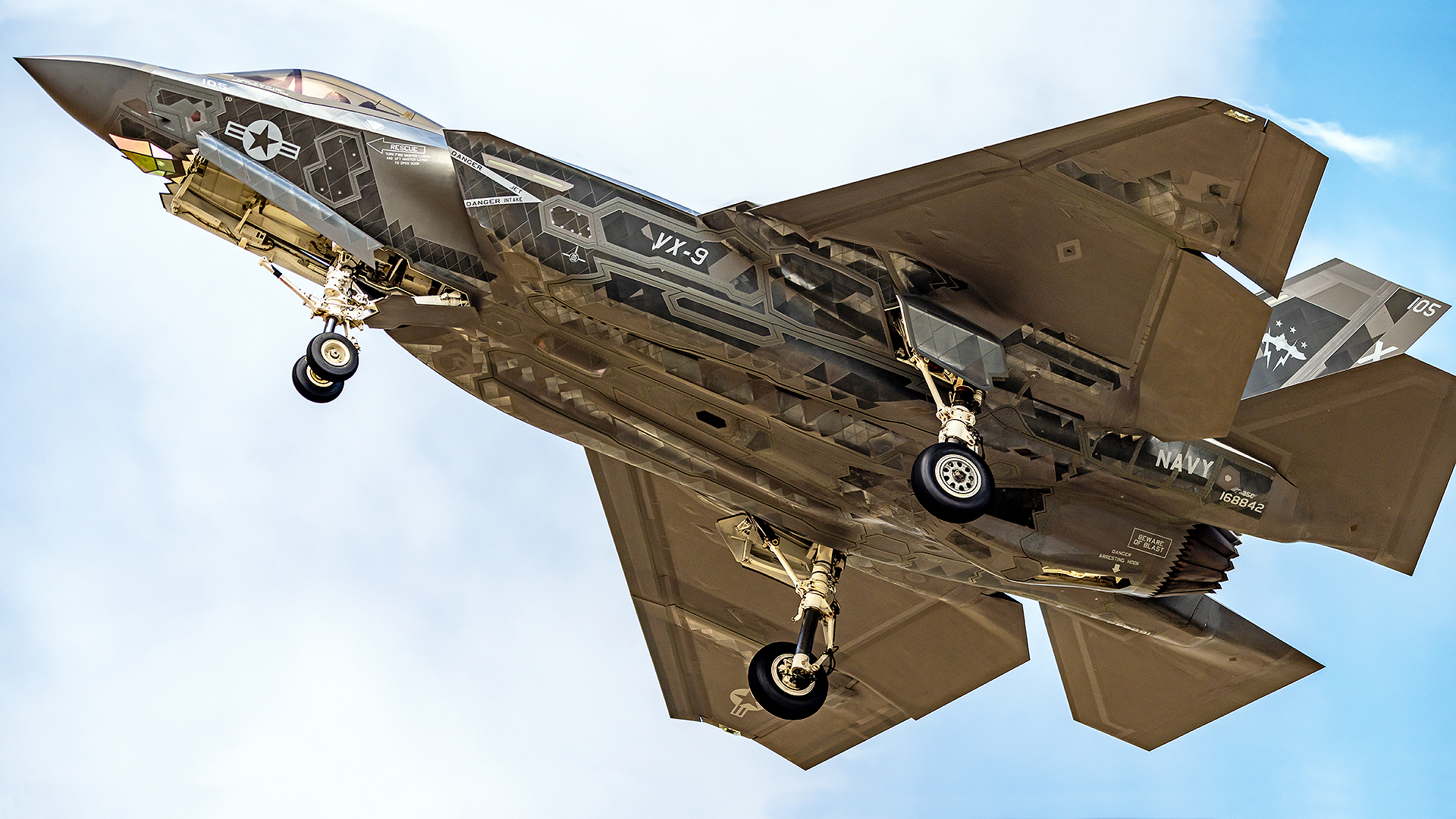Another U.S. military stealth jet has been spotted wearing a metallic-looking coating. This time it’s a U.S. Navy F-35C Joint Strike Fighter sporting a mosaic of panels with mirror-like finishes. This is different from another ‘chrome’ coating previously seen on one of the service’s F-35Cs, but is very similar to one that has been observed on a U.S. Air Force F-22 Raptor in the recent past.
Author’s note: for full context check out our last major report on these mysterious ‘chrome’ finishes that have now shown up on a variety of stealthy aircraft here.
The jet in question belongs to the Navy’s Air Test and Evaluation Squadron Nine (VX-9), the “Vampires,” and has the Bureau Number serial number 168842. The aircraft – seen in the pictures at the top of this story and below taken by Fred Taleghani of FreddyB Aviation Photography, who goes by the handle @cvvhrn Twitter – has been flying from Naval Base Ventura County (NBVC) Point Mugu in California since at least last week.

The aircraft also has the modex number 105, which is painted on the outside of both of its twin tails, along with the VX-9 tail code XE. A subdued variation of the VX-9 logo, consisting of a bat and twin lightning bolt motif with four stars arrayed above, is also seen on the outside of the left tail.

The markings are, of course, much less interesting than the mosaic of rhombus, triangle, and square-shaped tiles arrayed around the airframe. This is distinct from the pattern seen on the F-22 with the mirror-like finish that emerged last year, which featured a mix of square, trapezoidal, and somewhat triangular-shaped panels, as you can find out more about here.
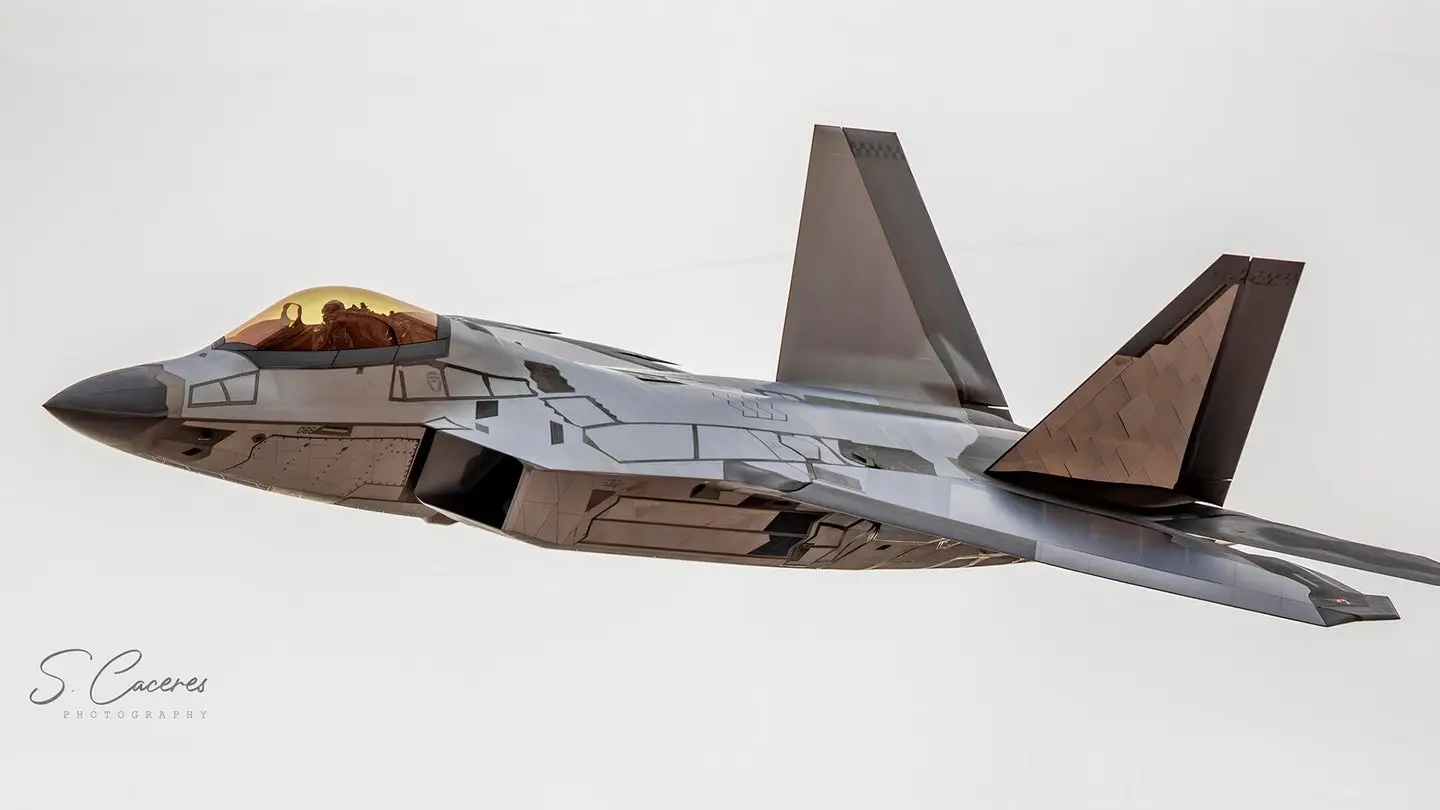
A second ‘chrome’ Raptor emerged around March of this year with a different coating pattern characterized by arrays of smaller rectangular, trapezoidal, and triangular tiles. This application has more in common with that of the F-35C in this post than the earlier Raptor mirror-like coating.
The coating that 168842 currently has is also different from one that was seen previously on at least one other VX-9 F-35C, which had distinctive scalloped edges mid-way across both wings and a much larger area covered with more of sheet-like material in areas, similar to the first ‘mirrored F-22.’
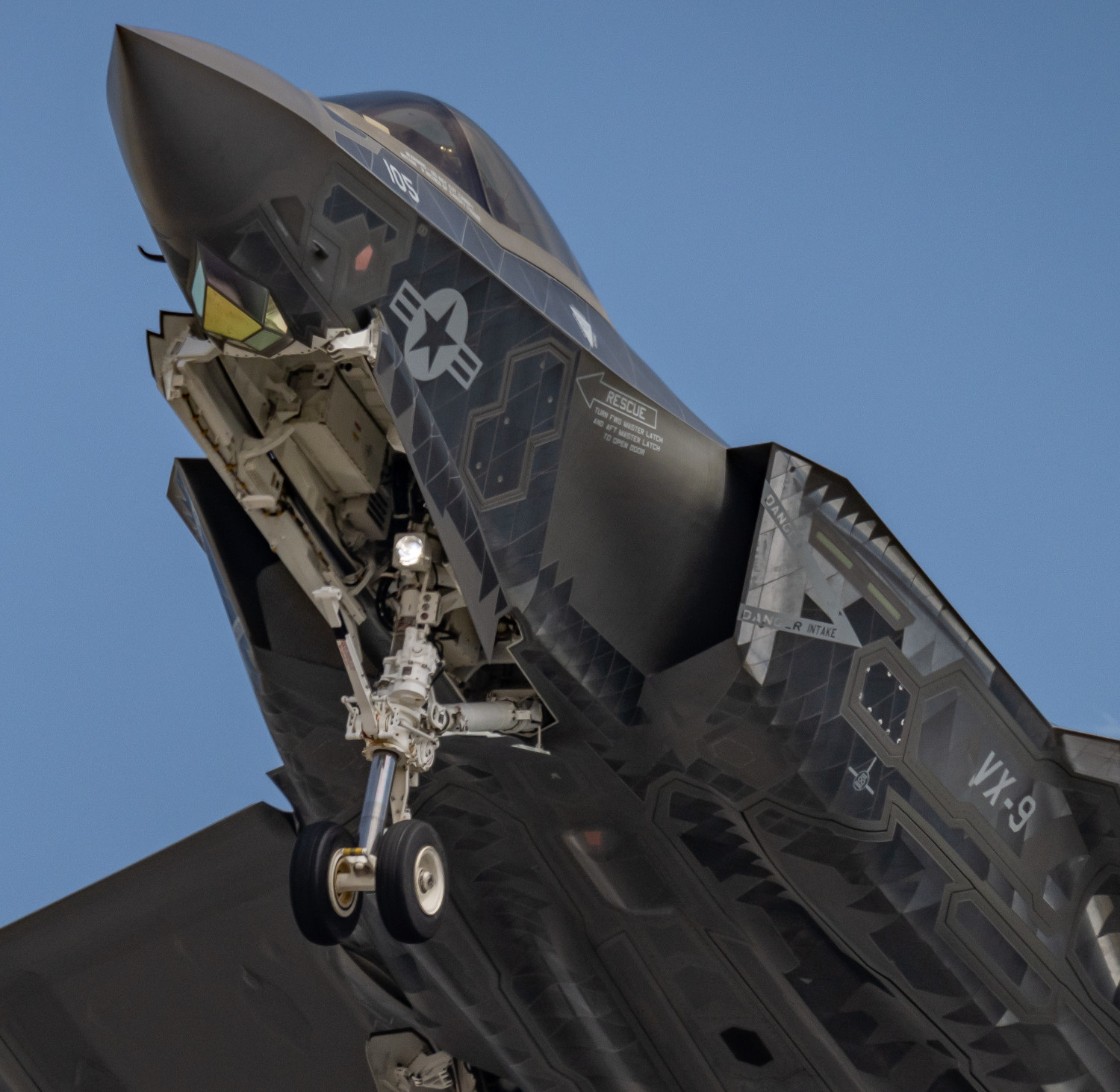

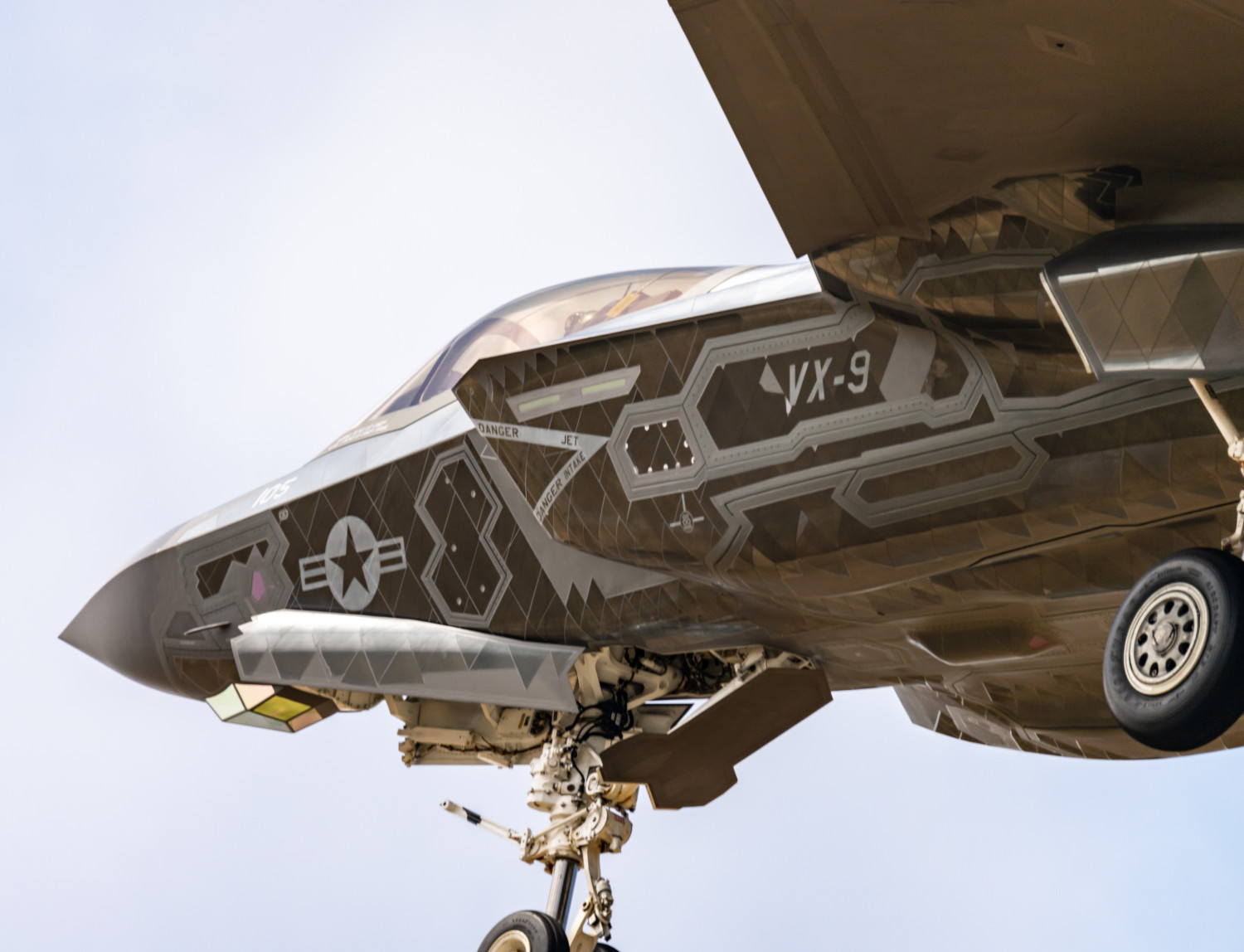
There has been some suggestion that 168842 may have previously had this earlier coating. However, the jet that was seen with it while flying in an area along the California-Nevada border in January had a different modex number, 100. Of course, more than one of VX-9s F-35Cs could certainly have had this other coating applied at one time or another.

Regardless, we definitely know now that at least two of VX-9’s Joint Strike Fighters have had at least one of the metallic-looking finishes applied. The earlier F-35C coating had appeared as if it might be translucent, looking either reflective or matte depending on the viewing angle and reversing the contrast of the markings beneath it as the perspective moved from front to rear. It’s not entirely clear whether the coating on the 168842 has similar qualities.
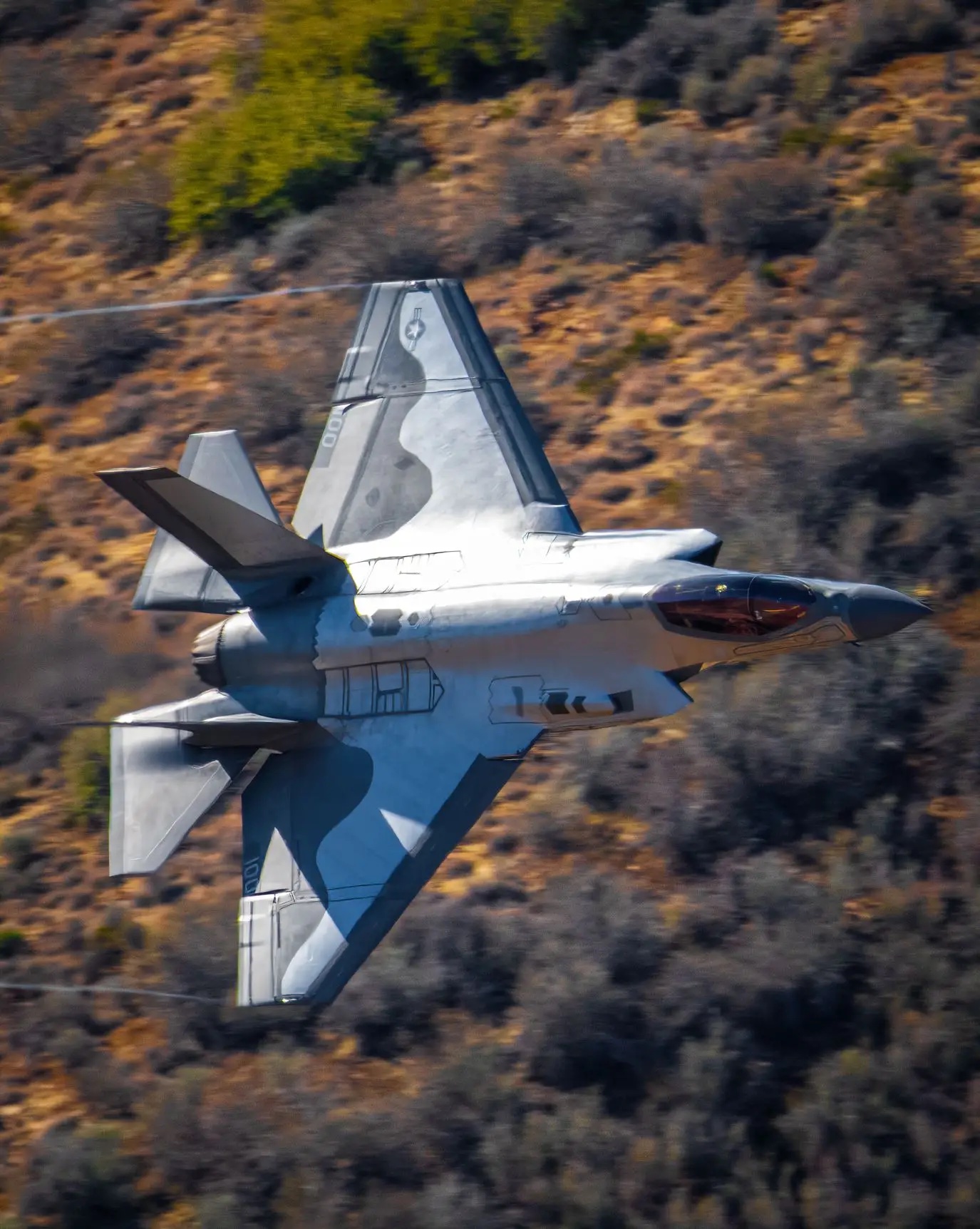

In addition to the two different styles of mirror-like coatings for the F-22, we’ve seen at least one of the Air Force’s not-so-retired F-117 Nighthawk stealth jets with a similar finish recently. Even one of Scaled Composites’ Model 401 demonstrator jet was seen wearing a similar coating over NAWS China Lake long before the F-22s appeared with it. Similar coatings can be traced even further back to the fully operational era of the F-117 program.


We still don’t know the exact story behind these finishes, but they are believed to help reduce the signature of these already stealthy aircraft, particularly in the infrared spectrum, without dramatically impacting the aircraft’s radar cross-section. It may also have to do with making the aircraft’s sensitive low-observable skin more maintainable and robust over time. Whether these particular coatings are designed to be representative of something that could be applied to operational aircraft, or are just being used for research and development and test and evaluation purposes in their current form, is unclear.
Why 168842, specifically, is in Point Mugu is also not entirely clear. Earlier this month, Naval Base Ventura County did issue a somewhat cryptic press release regarding increased flight activity at the base starting on August 22 and ending on September 2.

“NBVC Point Mugu will host approximately 50 aircraft. Aircraft supporting multiple test events are expected to operate during airfield hours out of NBVC Point Mugu from August 22 to September 2, with the larger segments of flying between August 22-26,” the release said. “No night operations are scheduled at this time.”
However, the press release also described whatever would be happening as a singular “exercise” that is intended “to provide unit-level training for pilots and aircrews on the Point Mugu Sea Range.”
The War Zone has reached out to the Navy for more information.
It is all but certain that 168842 is at Point Mugu to take part in this test/exercise plan, whatever it might entail. A number of other aircraft from the Navy’s test and evaluation community, as well as similar Marine and Air Force units, look to have now descended on the base for the same reason. Photographer Matt Hartman was able to grab shots of a number of these other jets, and there were some of particular interest.
Additional aircraft from VX-9, including F/A-18E and F model Super Hornets and at least one EA-18G Growler, were among them. Another EA-18G from Air Test and Evaluation Squadron 23 (VX-23) touched down, too.

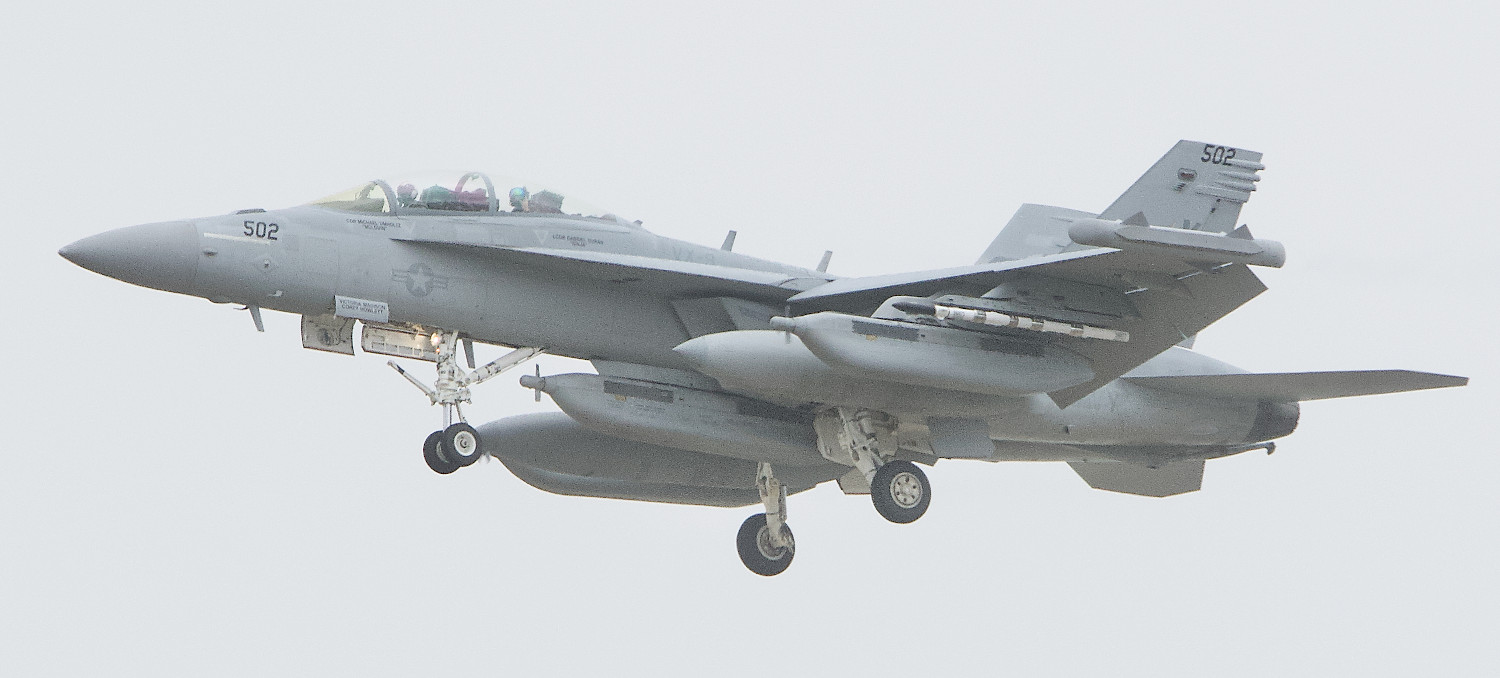
As seen in the picture below, the VX-23 Growler arrived carrying two new AN/ALQ-249(V)1 Next Generation Jammer-Mid-Band (NGJ-MB) electronic warfare pods under its wings. These are one part of a suite of new electronic warfare pods being developed for the EA-18G, which you can read more about here.

Two Air Force F-117s, which are now being regularly used in major exercises and test events often as surrogates for low observable (stealthy) aircraft and cruise missiles, are now at Point Mugu, too. One of the service’s new F-35A aggressors assigned to the recently reactivated 65th Aggressor Squadron has touched down at the base, as well.
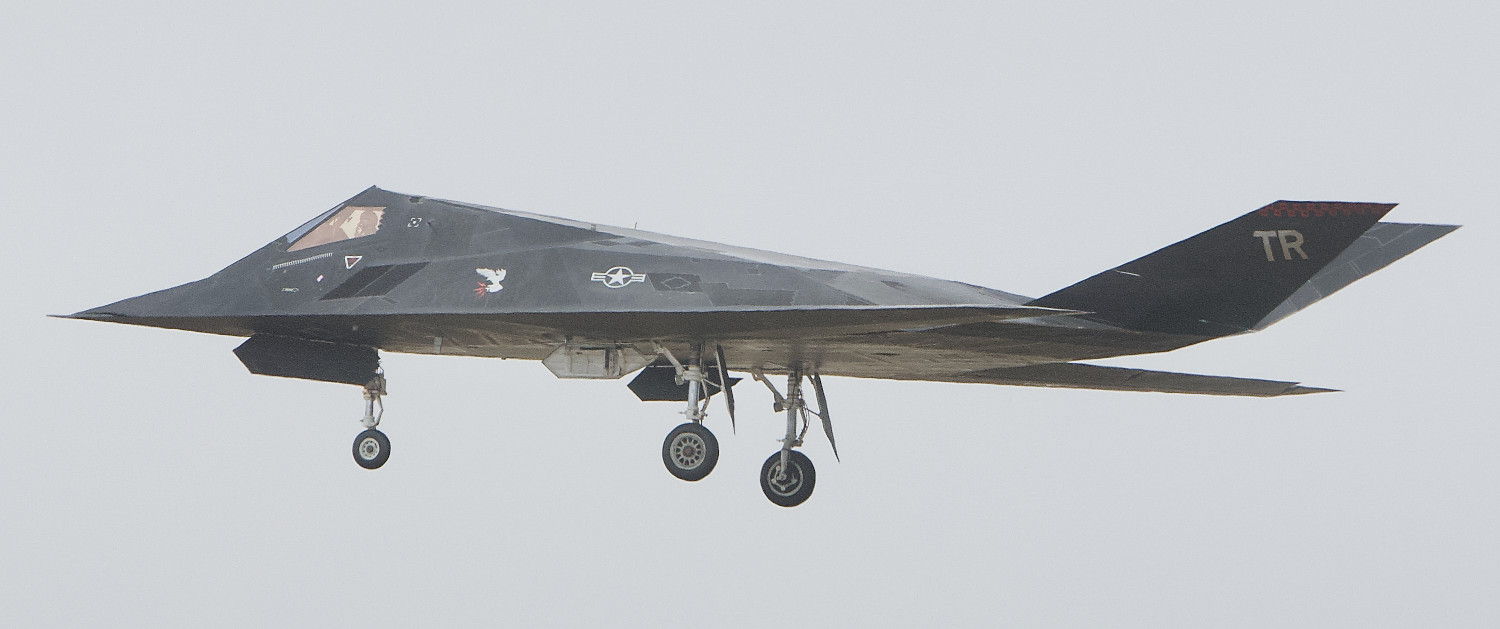


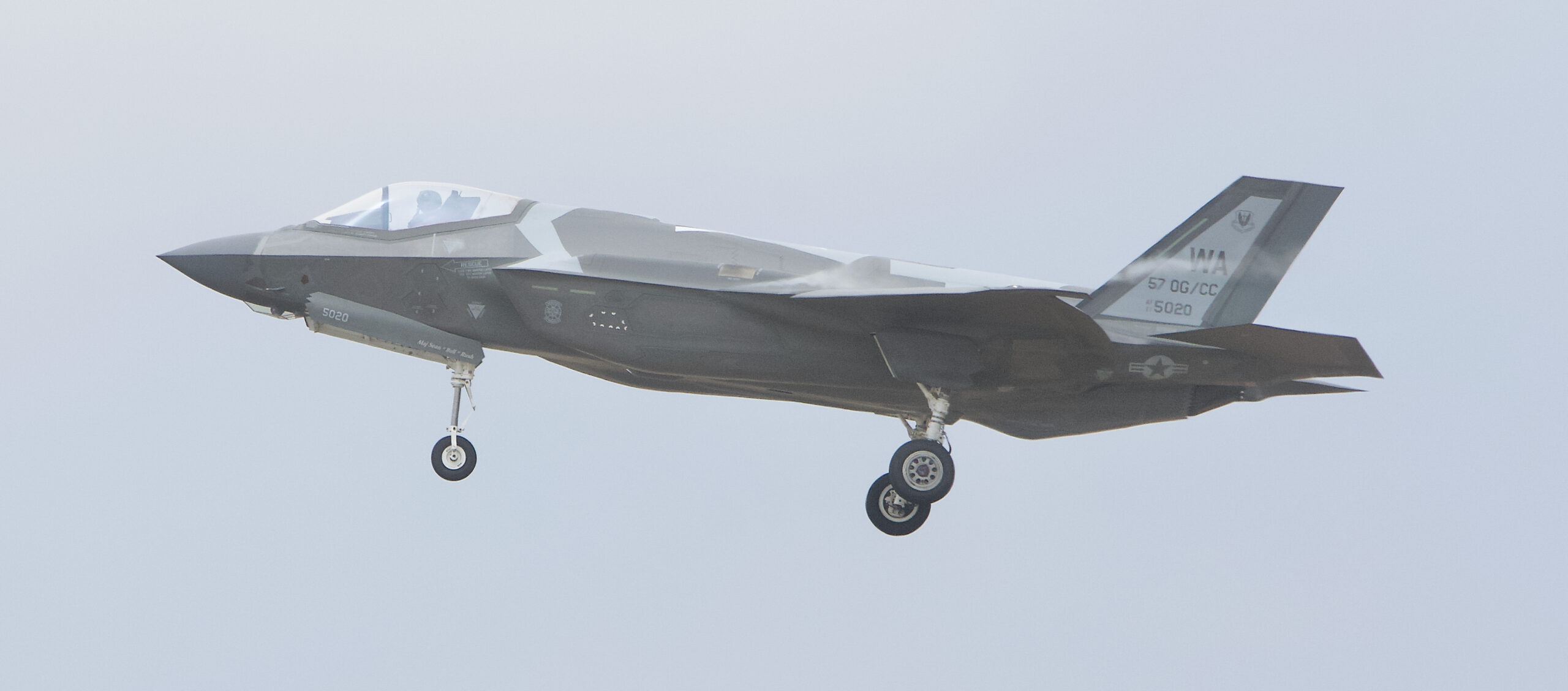
Two Marine F-35Bs from Marine Operational Test and Evaluation Squadron One (VMX-1) were also among the recent arrivals.

Whatever test and/or training event Point Mugu is now hosting, a wide variety of specialized assets are participating that are capable of presenting, or least mimicking, an equally diverse array of threat profiles. Of the other aircraft beyond the mirrored F-35C, the EA-18G with the NGJ-MB pods is particularly notable given that the Navy has said in the past that it expects this electronic warfare system to reach initial operational capability by the end of Fiscal Year 2022. The 2022 Fiscal Year ends on September 30.
It’s also important to remember that the aircraft noted in this story are just the ones that have been seen in the open. The NBVC press release mentions 50 aircraft, so there are definitely others taking part in the testing/training that haven’t necessarily been observed visually. For example, online flight tracking software recently showed an Air Force B-52 bomber conducting a mission off the coast of southern California the day after the test/training activities at Point Mugu were said to have started.
It is also worth noting that this would not be, by any means, the first time the elements of the Navy and the Air Force have conducted advanced joint test and training activities areas off the southern California coast. At the same time, these kinds of events have been occurring more frequently, and have been growing in size and scope. This is in no small part a product of efforts to better incorporate representations of higher-end threats, and do so at larger scales over greater distances. In June, for instance, the two services notably joined together in the Southern California range complex to conduct a major multi-faceted training exercise that also involved fighter jets, bombers, and an aircraft carrier strike group, among other assets, as you can read more about here.
All told, from what we have seen, it would certainly seem very possible, if not probable, that the test/training activities being conducted from Point Mugu are intended, at least in part, to evaluate a variety of different sensors and countermeasures in larger-scale and more operationally representative environments. In many ways, what has been observed so far from aircraft operating out of the base feels very similar to previous Air Force Orange Flag and Black Flag large force test and evaluation exercises, which have generally taken place within the airspace over the Nevada Test and Training Range (NTTR), albeit this would be Navy-led.
It will certainly be interesting to see what details, if any, subsequently emerge about the metallic-looking F-35C and the test/training events at Point Mugu it is now taking part in. What now seems certain is that are basically two flavors of ‘chrome’ coatings for stealthy jets that are increasingly being put to the test by both services.
UPDATE:
Another F-35C with a ‘chrome’ coating has now arrived at Point Mugu. This is the same one we reported on in January, a VX-9 jet with the ‘100’ modex, wearing a very similar coating as the first ‘chrome’ F-22 that appeared last year. So both types of coatings are now in play for this large test exercise, which matches USAF efforts out of Nellis AFB in the past where both coatings were being flown on F-22s.
This new info comes to us via a couple of great images from Zach Hajic (@Watching_Planes), check them out:

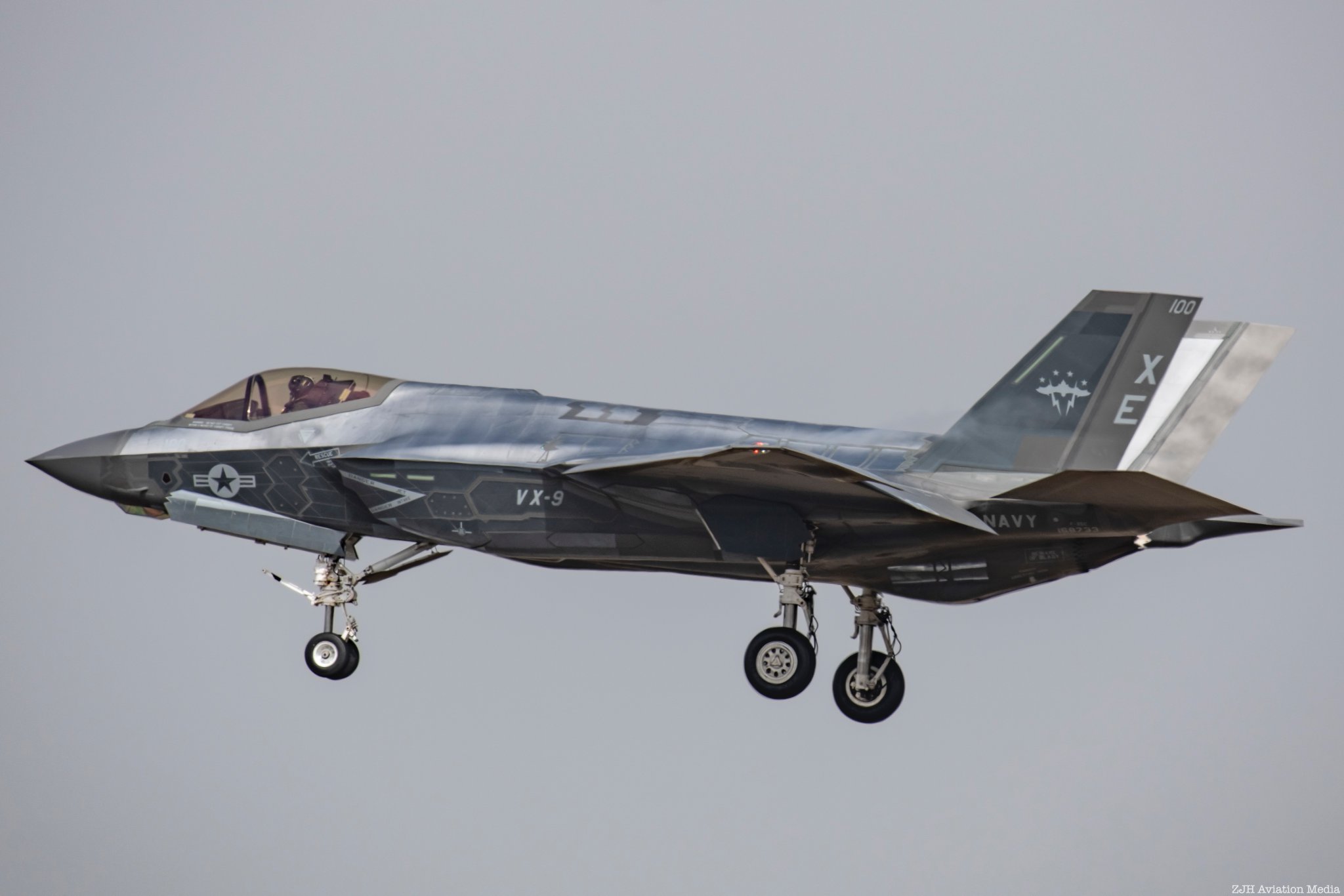
Contact the author: joe@thedrive.com
